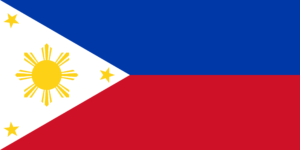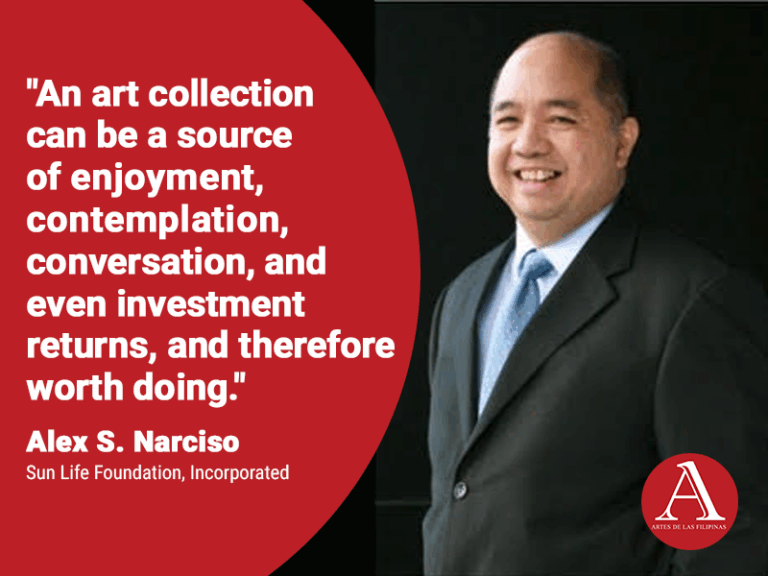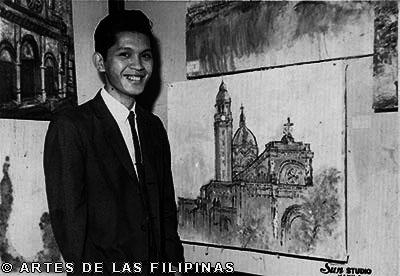
Making An Impression: Efren Zaragoza’s Life in Art
by: Christiane L. de la Paz
January-February 2015–Efren Zaragoza had his first sighting as a printmaker in 1966 when he joined the First National Graphic Art Competition sponsored by the Art Association of the Philippines. His interest in printmaking was further whetted with the establishment of the Philippine Association of Printmakers (PAP) workshop in 1968. In 1969, he mounted his first solo exhibition at the Luz Gallery where he showcased his woodblock prints. Working alongside with other print advocates, Zaragoza’s figurative works such as the Luzon, Visayas and Mindanao often focused on the history, life, religion and culture and traditions of the Filipino people from 1970s-1980s while simultaneously doing ceramic arts. He worked mostly with woodcut, etching and lithography for their distinct visual effects. Seato Against Communism (1965), Sacred Relics (1966), Divide and Multiply (1968), Flagellants (1968), Africana II (1970), Laced Voodoo (1971), Mushroom Eaters II (1974), In Mourning State (1976) and Ati-Atihan Festival Series One (1976) were some of his known expressionist prints.
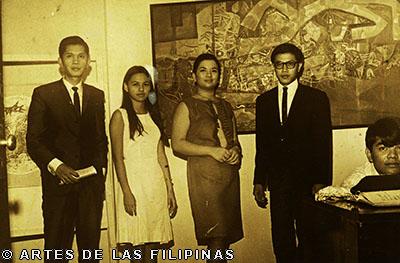
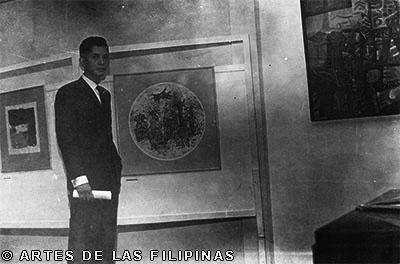
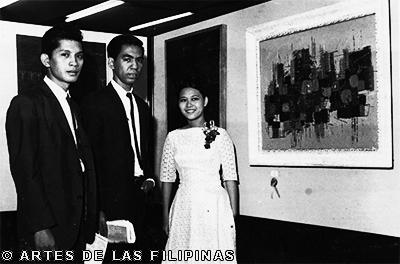
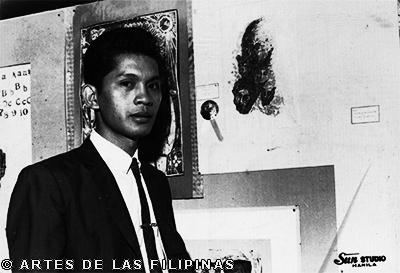
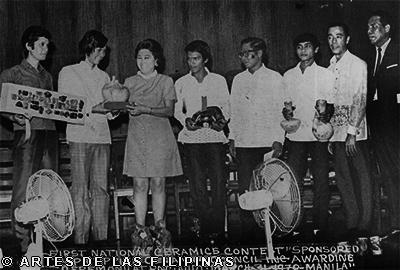
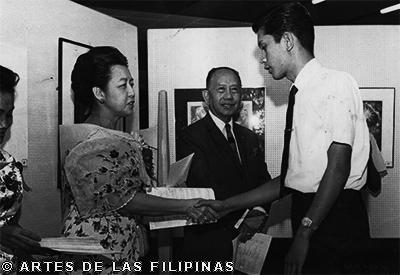
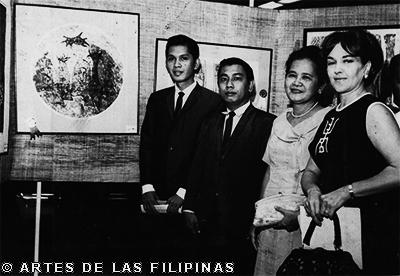
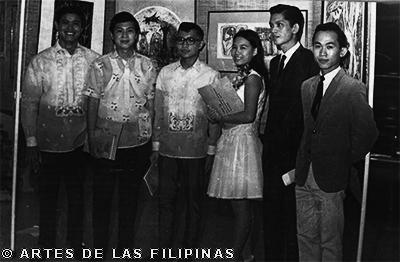
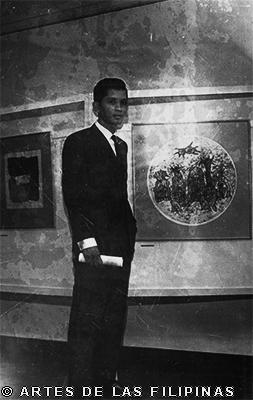
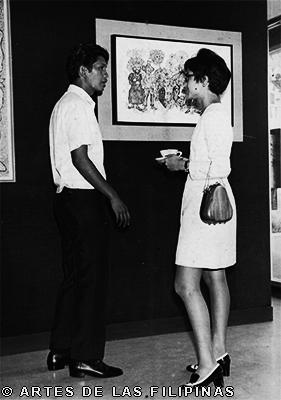

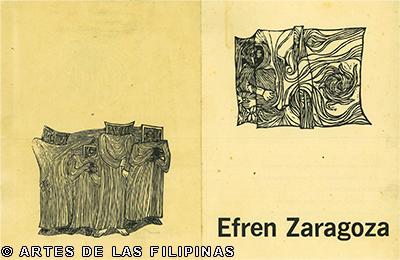
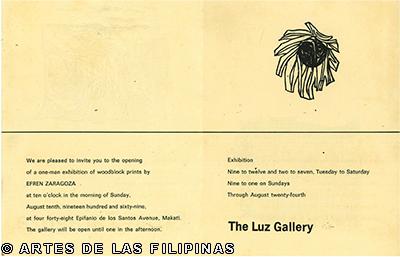
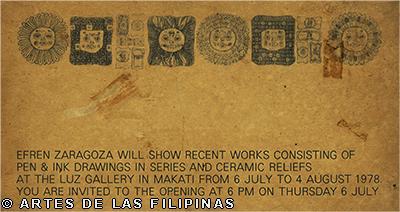
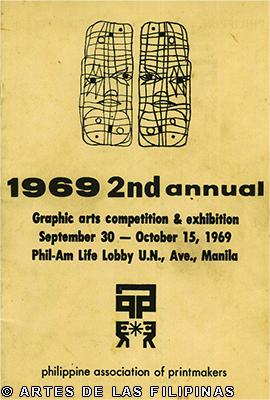
Born on March 22, 1940 in Libon, Albay, Efren Zaragoza was the third of nine children of Miguel Zaragoza, a chest specialist and Lilia Villanueva, a Math and Chemistry professor at the Philippine Women’s University (PWU). He grew up in San Andres, Manila where he spent his elementary and high school education at the Malate Catholic School, graduating in 1957. He first studied fine arts at the University of SantoTomas College of Architecture and Fine Arts but moved to the University of the Philippines in 1961 and became a member of the Upsilon Sigma Phi Fraternity. When a fraternity war broke in the campus in 1962, he studied at the PWU College of Fine Arts and Music from 1965-1967 and became the layout artist of Philwomenian, the school organ. During this time, Zaragoza participated in the XVth Shell National Student Art Competition where he won honorable mention for his lithograph, Nightmare. A year later, he bagged first prize for Tribal Vicars and was cited honorable mention for Nightmare. He was often described as a bibliophile, a perfectionist and a quiet person who confined himself to his room developing his art practice. On June 19, 1989, he died of cardiopulmonary arrest. He was among the early purveyors of printmaking who actively embraced its complicated process.

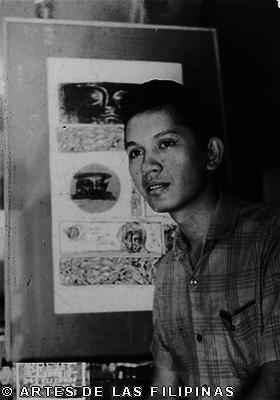
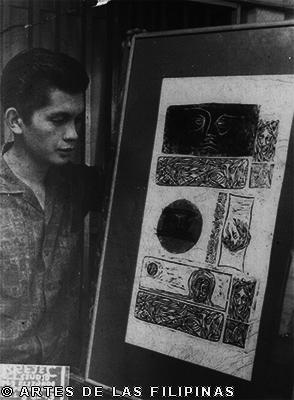
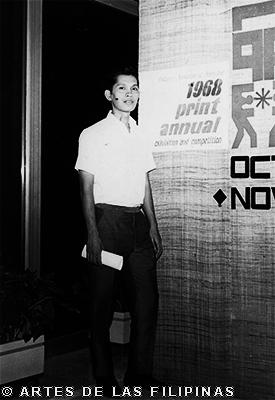
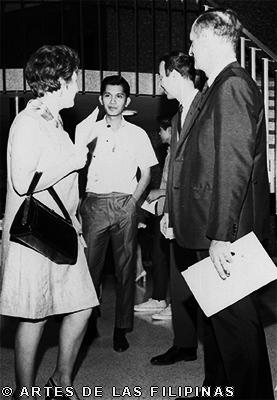
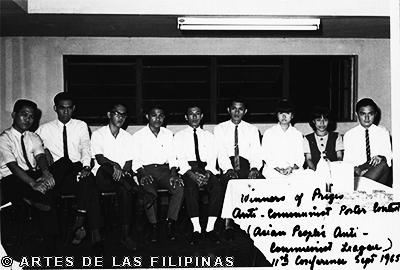

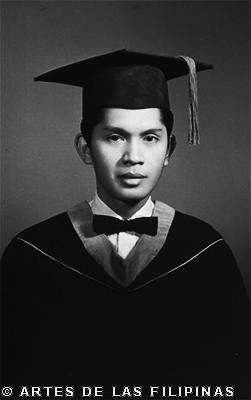

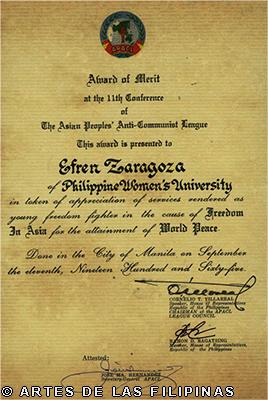
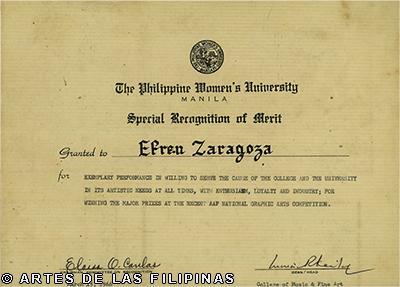
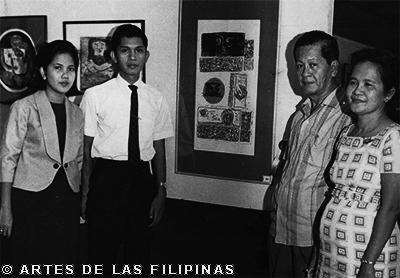
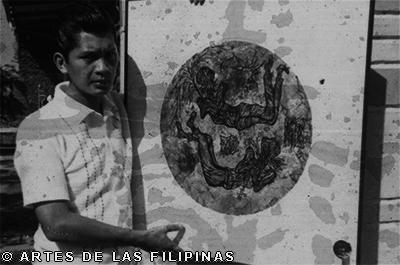
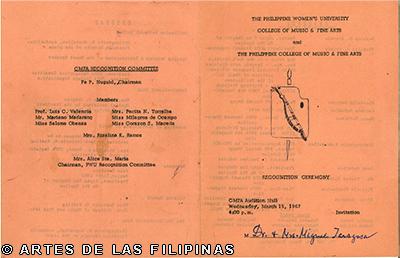

AWARDS AND DISTINCTIONS
1976: Finalist
Philippine National Bank
60th Anniversary Art Contest and Exhibition
“Ati – Atihan Festival Series One”
Pen and Ink
1974: Third Prize
“Laced Voodoo”
First Honorable Mention
Sixth Annual Graphic Arts Contest
Philippine Association of Printmakers
“Mushroom Eaters”
1971–Third Prize
“Laced Voodoo”
First Honorable Mention
“In Mourning State”
4th Annual Graphic Arts Contest
Philippine Association of Printmakers
1970: Grand Prize
Third Annual Graphic Arts Contest
Philippine Association of Printmakers
“Africana II”
First Prize – Artware
First National Ceramic Contest & Exhibition
Philippine Ceramic Council
“Divide and Multiply”
1968: First Prize
Pasaknungan ’68 Cultural Program Graphic Arts
Office of Economic Coordinator
“Flagellants”
First Prize
First Annual Graphic Arts Competition
Philippine Association of Printmakers
“Their Divine Providence”
1966: Third Prize – Woodcut
“Sacred Relics”
Third Prize – Lithography
“Inferiority Complex”
First National Graphic Art Competition
Art Association of the Philippines
1966: First Prize
“Tribal Vicars”
Honorable Mention
“In Mourning State”
XVIth Shell National Student Art Competition
The Shell Refining Co. (Phils.) Inc.
1965: Honorable Mention
XVth Shell National Student Art Competition
The Shell Refining Co. (Phils.) Inc.
“Nightmare”
Fifth Prize
First APACL Anti-Communist Poster Art Contest
11th General Conference
Asian People’s Anti – Communist League
“Seato Against Communism”
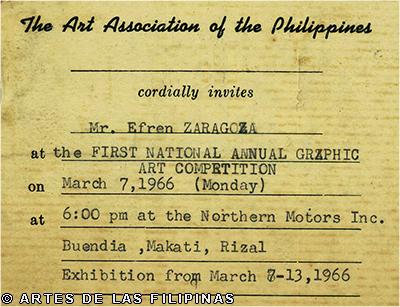
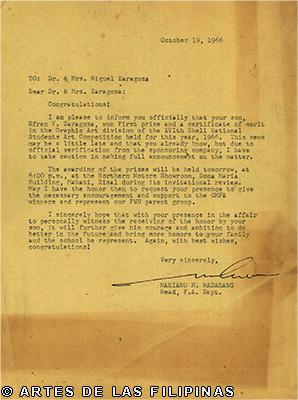
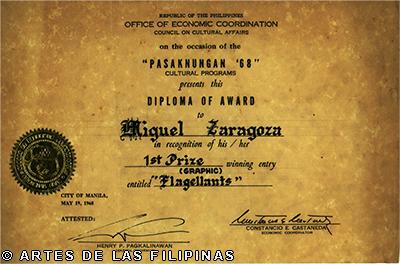
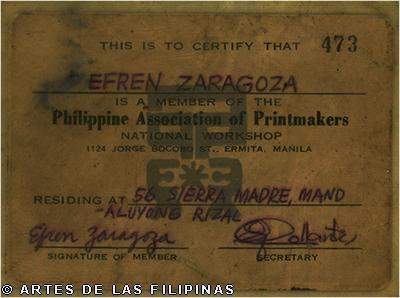
49
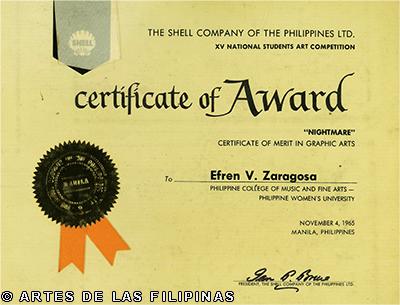
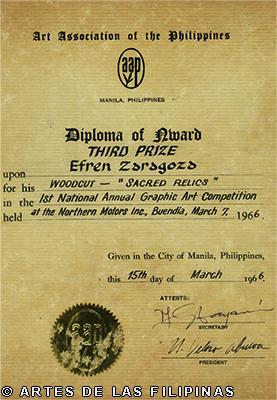

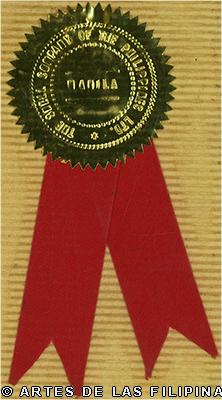
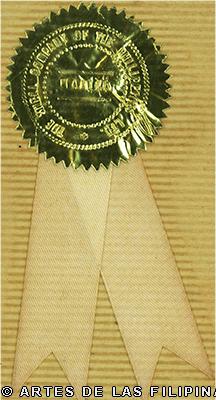
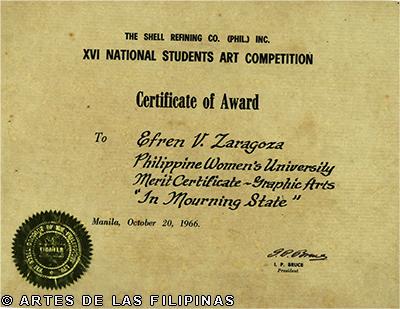
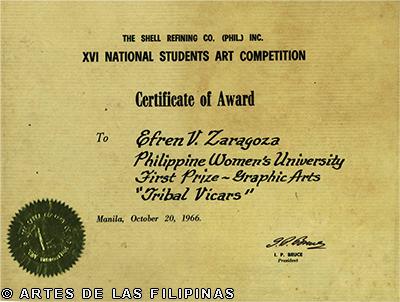
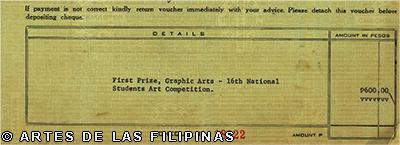
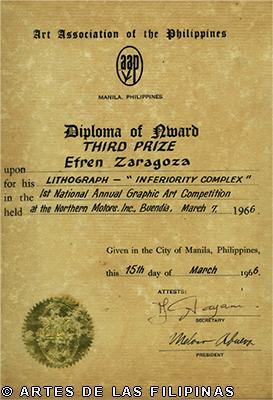
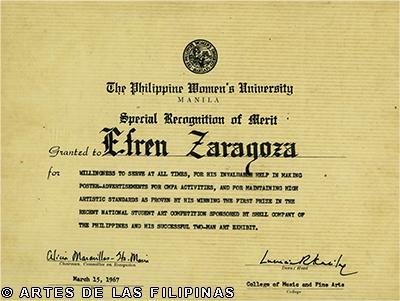
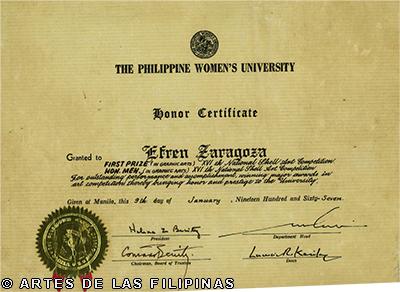
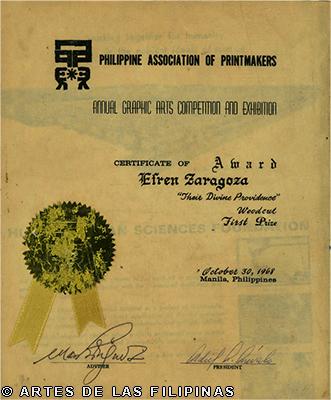
PUBLICATIONS
M O D – August 22, 1975
The Manila Chronicle – March 18, 1970
Mirror – April 4, 1970
Chronicle Magazine – December 30, 1967
Manila Bulletin – October 27, 1966
Artworks on
Book of Poems
by Gelacio Y. Guillermo, Jr.
1968
Cover – “Tribal Vicars”
The University
Philippine Women’s University
Quarterly Publication
November 1966
1968: First Triennale India 1968
Lalit Kala Akademi
INDIVIDUAL SHOWS
1978: Luz Gallery
Pen and Ink Drawngs in Series
Ceramic Reliefs
1969: Luz Gallery
Woodblock Prints
First One-Man Show
GROUP SHOWS
1965: Asian People’s Anti Communist League
11th General Conference First APACL
Anti-Communist Poster Art Contest
The Shell Refining Co. (Phils.) Inc.
XVth Shell National Student Art Contest
1966: Art Association of the Philippines
First National Graphic Art Competition
The Shell Refining Co. ( Phils.) Inc.
XVIth Shell National Student Art Competition
Philippine Women’s University
College of Music and Fine Arts
Advertising Art Show
1968: Office of Economic Coordinator
Pasaknungan ’68 Cultural Program
Philippine Association of Printmakers
First Annual Graphic Art Competition and Exhibition
1969: Philippine Association of Printmakers Exhibition
Philippine American Life
Philippine Association of Printmakers Exhibition
Cultural Center of the Philippines
Philippine Association of Printmakers
Second Graphic Arts Competition and Exhibition
Young Artists Show
Luz Gallery
1970: Philippine Association of Printmakers
Third Annual Graphic Arts Competition & Exhibition
Luz Gallery
Art Association of the Philippines Gallery
1971: Philippine Association of Printmakers
Annual Graphic Arts Competition and Exhibition
1970: Philippine Ceramic Council
First National Ceramic Contest and Exhibition
1974: Philippine Association of Printmakers
Sixth Annual Graphic Arts Competition & Exhibition
Philippine Association of Printmakers
Hyatt Regency
Philippine Association of Printmakers
Sining Kamalig
1976: Philippine National Bank
60th Anniversary Art Contest & Exhibition
Ortanez University
TWO–MAN SHOWS
1966: Philippine Women’s University
College of Music and Fine Arts Gallery
1967: Indigo Gallery
FOREIGN EXHIBITIONS
1968: First India Triennale
New Dalhi, India
Philippine Representative in Print
“Divide and Multiply”
“False Prophet”
1971: Paris Biennale
Paris
Philippine Representative in Print
“In Mourning State”
“Two Figures”
“Laced Voodoo”
1976: Print Council of Australia
Australia-Western Pacific Print Biennale
Philippine Representative
“In Mourning State”
PRESS RELEASES
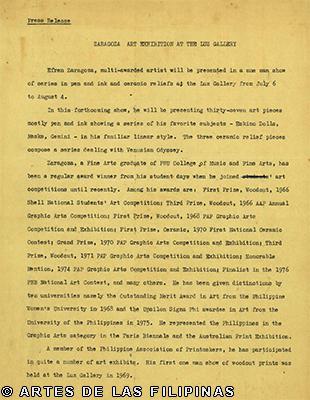

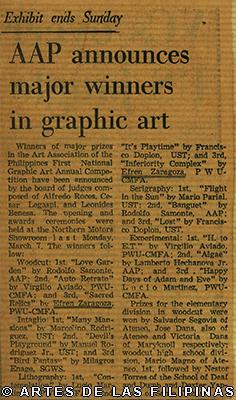
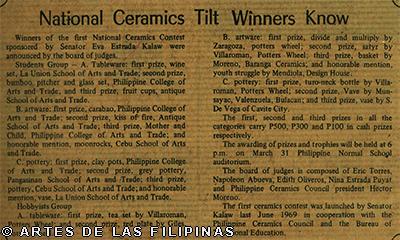

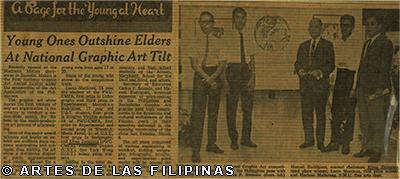
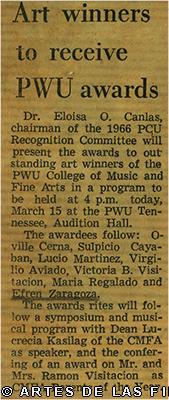
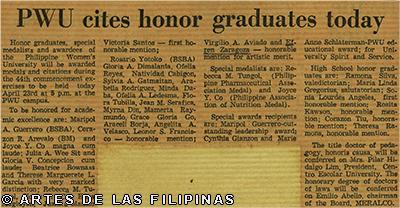
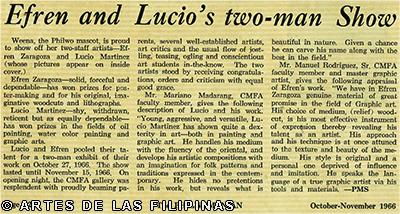
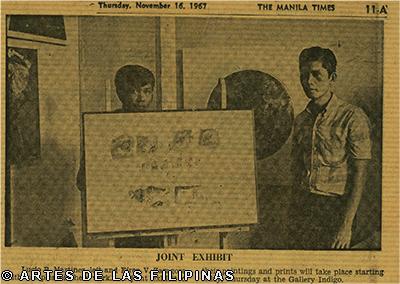

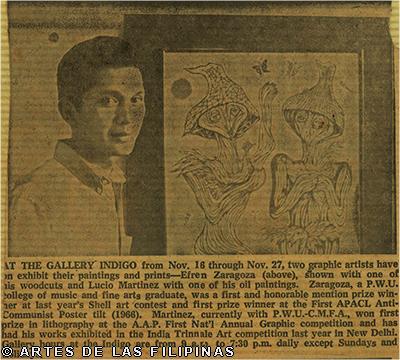
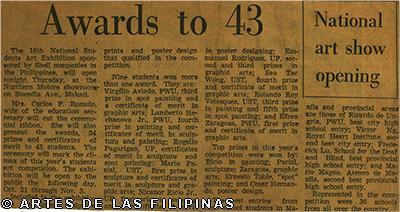
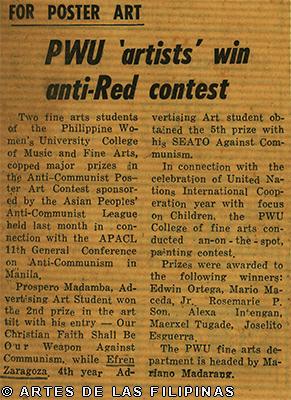
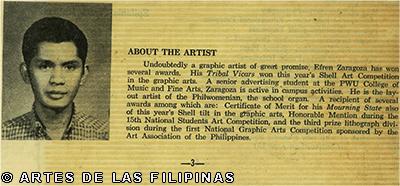
ABOUT THE ARTIST
Undoubtedly a graphic artist of great promise, Efren Zaragoza has won several awards. His Tribal Vicars won this year’s Shell Art Competition in the graphic arts. A senior advertising student at the PWU College of Music and Fine Arts, Zaragoza is active in campus activities. He is the layout artist of the Philwomenian, the school organ. A recipient of several awards among which are: Certificate of Merit for his Mourning State also of this year’s Shell tilt in the graphic arts, Honorable Mention during the 15th National Students Art Competition, and the third prize lithograph division during the first National Graphic Arts Competition sponsored by the Art Association of the Philippines.
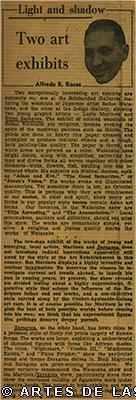
TWO ART EXHIBITS
Two exceptionally interesting art exhibits are currently on; one at the Solidaridad Galleries featuring the woodcuts of Japanese artist Sadao Watanabe, and the other at the Indigo Gallery, showing two young graphic artists – Lucio Martinez and Efren Zaragoza. The exhibit of colored woodcuts of sadao Watanabe are religious, themes evoking the spirit of the medieval painters such as Giotto. The prints are done on heavy rice paper creased and crumpled to produce textural effects, and a rough , bark painting-like quality. The paper is tinted, and white areas are printed as a color. Watanabe uses bright colors, along with simplified, naive-like human and divine forms all woven together with other elements- birds, flowers, fish, swirling into one interlaced whole. His subjects are Biblical themes, such as “Adam and Eve,” “ The Good Samaritan,” or “Jacob’s Vision.” His works evoke old illuminated manuscripts. Yet somehow there is too, an Oriental quality. This is perhaps why they are reminiscent of our santos, in color and spirit, since many art forms in our popular style santos contain Asian art forms. Our favorites in the Watanabe snow are “Elija Ascending” and “The Annunciation.” Local printmakers, painters and collector, should not miss this show. The works are remarkably simple, yet alive. A religious and joyous quality marks the works of Watanabe.
The two man exhibit of the works of young and emerging, local artist, Martinez and Zaragoza does not introduce radical innovations apparently still awed by the style of the Art Establishment in this country. But Martinez displays a highly inventive and restless imagination. He deserves the chance to investigate current arts trends abroad, to launch his own in coming years. At present, the show reveals his divided feeling about a highly expressionist, figurative style that echoes the influence of the Rodriguez father and son works, and a non- objective style carried along by the Chabet-Aguinaldo –Galang art rage. It is of course possible for Martinez to exploit the best of the both possible worlds before coming into his own; we think that his expressionist figurative probings deserve deeper pursuit.
Zaragoza on the other hand, has hewn close to a personal style of finely cut prints largely of human forms. The works are large, exploiting a neither-world of shrouded figures with faces like African masks. The titles, “Nightmare,” “Voodoo III,” “Mushroom Eaters,” and “False Prophet,” show the particular mood and theme Zaragoza delves in. Both Martinez and Zaragoza are prize-winning printmakers. We most certainly recommend the Watanabe show and the Martinez/Zaragoza show, particularly since they show the continued validity of figurative work under creative hands. The prices in both exhibits are very reasonable too, a relief from the price-tag contest going on among the Establishment.–Alfredo Roces
The Mysteries of WOODCUT
(August 22, 1975)
It took a meticulous craftsman like Efren Zaragoza before other artists took notice of the woodcut, It is one of the processes involved in the graphic arts aside from intaglio, planographic and stencil. Woodcut falls under the relief. Woodcut falls under the relief process. Like any medium in the arts which is on a fledgling stage, woodcut trailed the intaglio process when the graphics first drew attention here. Etching was the rave with printing in dry points and metal- plate engraving making a little headway. Two intaglio processes, the aquatint and mezzotint in the local arts scene. Serigraphy, with Romulo Olazo, Rodolfo Samonte and the young crop of Lito Mayo and Joel Soliven, has recently made a big breakthrough. Woodcut is also fast gaining attention althrough it seems that there are fewer artists involved in the process. Efren has proved himself along this line (through no deliberate efforts on his part whatsoever since “Im not competing with anyone”) and is still drawing attention to the potency of woodcut. Actually, woodcut is not a “young” graphic process. In fact, it was already a major craft during the early Protestant Reformation period when “no school of northern European painting was as important as the German and no painter as important as Albrecht Durer” Born in 1427 and dead in 1528, Durer distinguished himself not only in oil painting but also in engraving and woodcutting.
Perhaps it is not an exaggeration to say that it was Efren who pursued in the Philippines the mastery of Durer over the woodcut. Both are craftsmen and both relentlessly worked toward excellence. “Patience is necessary to achieve mastery of woodcut,” Efren explains. Before starting on any work, Efren prepares a study of the designs. He has a series of studies ready to be cut anytime. This enables him to analyze his designs carefully before putting them on wood. The studies futher give him an opportunity to make alterations. It is extremely difficult to do any corrections on the wood once parts have been cut away so “I see to it that the moment I cut away on a piece of the wood, the design has already been completed” Futhermore, the woodcut artist is dependent on the areas that are removed from the piece of the wood to get the desired cut and must therefore limit his design in terms of those areas. He uses lawanit or palo tsina for his woodcuts. The character of each line in a woodcut depends on the artist’s manner of cutting into the wood and what portions of the wood have been removed. It is only inevitable that the quality of the line be affected by the versatility of the artist.
Efren’s prize –winning Divine and Multiply (1970, Art Association of the Philippines Competition) and Laced Voodoo (1971, Philippine Association of Printmakers Annual Competition) show multiplication and variation of lines . Both pieces also speak of the artist’s craft. His mastery in carving smaller and more intricate areas, elaborate and more complex designs in very fine ridges without breaking the wood is obvious in the both works. The inherent difficulty which a woodcut artist encounters with his medium is evident in Efren’s works which probably is one of the reasons why not too many artists are interested in the craft. In any of Efren’s works, it is obvious that the artist pays more attention to detailed linear style than splashing his pieces with colors which could distract a viewer’s attention. If ever, he uses only two colors at a time and mostly the subdued ones. In this way, the interest of the viewer is held by the minute detail and powerful emotional agitation drawn by the lines. Efren first caught attention in 1964 when his nightmare won, followed in 1966 by his Tribal Cars in the Shell National Art Competition. Also in 1996, his Sacred Relics bagged the AAP award for woodcut and his Inferiority Complex won in the lithography category.
His critics noted him for “.. solid, forceful, dependable composition and value of lines.. original, imaginative woodcuts and lithographs… bold compositions with a refined sense of linear quality…” An indefatigable artist, Efren is also engaged in ceramics where he is recognized. He won first prize in the National Ceramics contest in 1970, artware division. This is another craft which he is determined to pursue “to give me a break from woodcut” His one desire is “to draw the distinction between commercialism and real art” in ceramics. By getting involved in ceramics and also in etching, Efren gives himself and his designs a test of flexibility. He tries his woodcut designs on etching and ceramics. His ceramics are actually a combination of two arts: the lines are of the woodcut but the over-all effect is that of relief sculpture. He uses ordinary clay for ceramics.
Since an artist like him does not have to worry about getting in the news, (he never was conscious of it), Efren is just willing to share his craft with a few who are genuinely interested to learn. He does not want a big group so “I can attend to the needs of each learner closely” He studied at PWU, UST and the UP. Virgilio Aviado encouraged him to take up the woodcut. Believing that an “artist cannot seperate himself from society” Efren is for greater social consciousness in the arts. His own works show the struggle of two forces: selflessness and selfishness. He considers this as a healthy indication of the degree of maturity his art has achieved. In a recent group show, he preferred that the new woodcut artists be given emphasis more than himself. He maintains “the artist must move towards and not away from society or else he produces northing but alienated art… for no reason at all must an artist get engrossed alone in his art forgetting that he is a part of the everyday life of the people.” Efren bewails the exploitation done by some galleries and pseudoart patrons on artists. “We honestly and wholeheartedly entrust our works to them and what do we get- unorthodox conditions, negligible honorarium not to mention the intrigues” he reveals. He had his first one-man show in 1969 and intends to have one in the near future. Between 1969 and today, he participates in group shows in fulfillment of a promise to develop woodcut more and perhaps achieve the excellence he wants to achieve in this craft. With him taking the initiative, the future of the woodcut is certain to carve a bigger place in Philippine arts. – Bay del Mar
LIST OF WORKS
WOODCUT
In Mourning State
Laced Voodoo
Mating
Their Divine Providence
Figure I
Moriones
Parasites
Primitive I
On to Medusa
Mushroom Easters II
Africana II
Nightmare
Inferiority Complex
Sacred Relics
Tribal Vicars
Divide and Multiply
Voodoo I
Voodoo II
Voodoo III
False Prophet
Idolatry
Tower of Babel
Tower of Babel II
The Annuciation
Two Figures
Flagellants
Gathering of Idols
Slumber
Jester
Incantation
Black Nuns
Op Face
Imprisoned Faces
Mask
Bird Lover II
Festival
Ati-Atihan
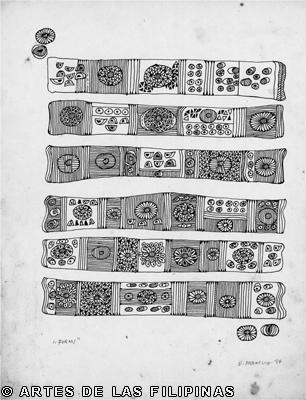
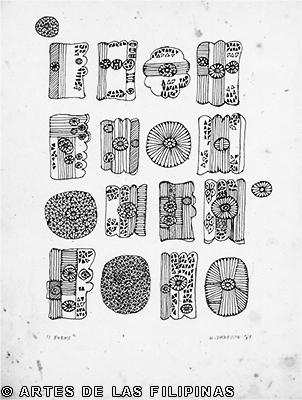
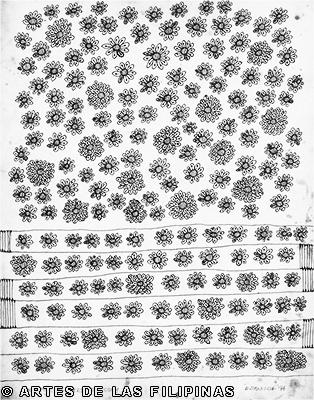
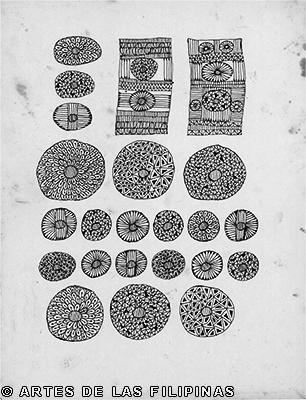
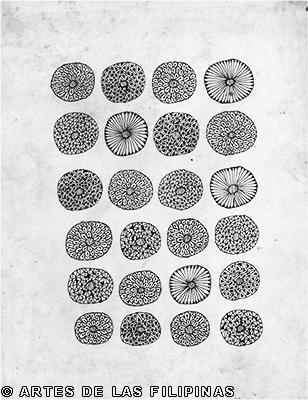
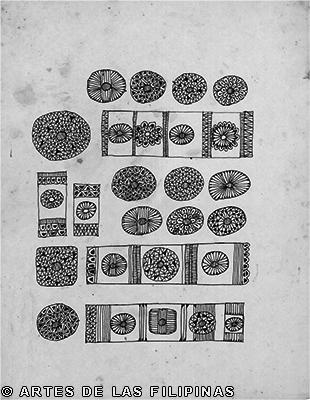
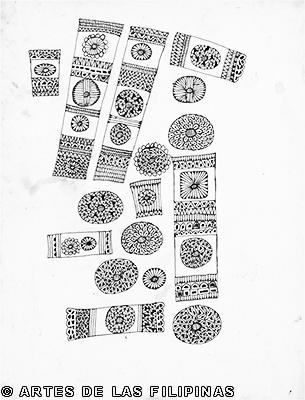
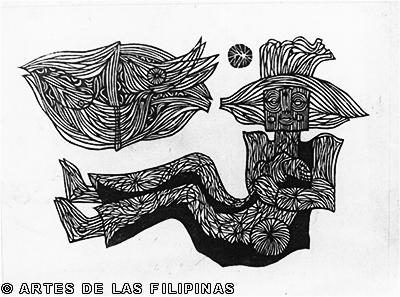
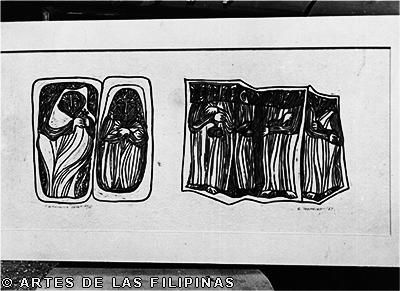
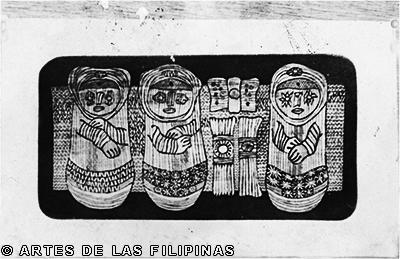
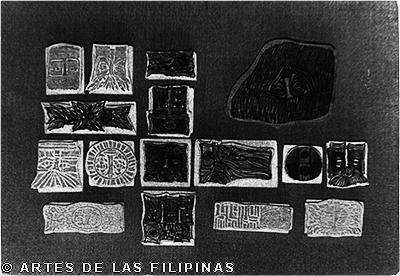
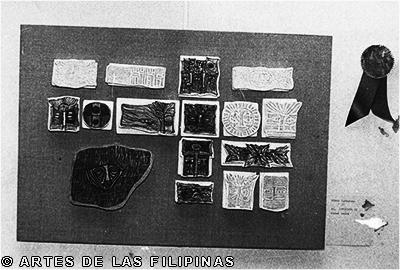
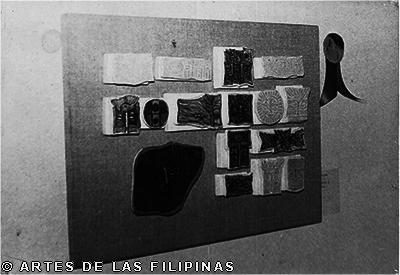

ETCHING
Eskimo Dolls
Africana II
Primitive I
Aztec I
Aztec II
Tribal Vicars II
Ati- Atihan
Moriones
Her Prophecy
Where in 2050
Birdman
Gemini
Mask
King
Queen
Aquarium I
Aquarium II
Aquarium III
Antelope
Castle
Mabolo
Oriental Dancer
Cats in a Tin Can
Playtime
Salakot
Muslim Woman
Kalan
Birds at Rest
Lace Portrait
Birds
Bird Lover III

